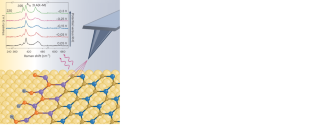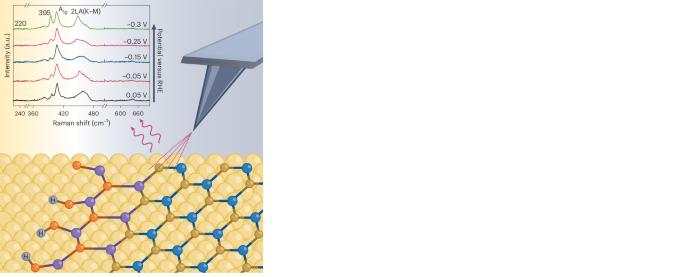监测催化纳米材料的作用
IF 42.8
1区 化学
Q1 CHEMISTRY, PHYSICAL
引用次数: 0
摘要
要合理设计改良型电催化剂,就必须深入了解反应过程中催化剂的活性位点。然而,分子转化发生在几纳米尺度上,同时进行纳米级化学、电子和结构研究的操作工具非常稀缺。现在,我们利用电化学尖端增强拉曼光谱揭示了 MoS2 上氢进化反应过程中单个活性位点的几何和电子生成与演化。本文章由计算机程序翻译,如有差异,请以英文原文为准。


Monitoring catalytic nanosites in action
Rational design of improved electrocatalysts requires a profound understanding of the catalyst’s active sites during the reaction. However, molecule conversion occurs on the few-nanometre scale and operando tools for simultaneous nanoscale chemical, electronic and structural investigation are scarce. Now, the geometric and electronic creation and evolution of individual active sites during the hydrogen evolution reaction on MoS2 has been unravelled using electrochemical tip-enhanced Raman spectroscopy.
求助全文
通过发布文献求助,成功后即可免费获取论文全文。
去求助
来源期刊

Nature Catalysis
Chemical Engineering-Bioengineering
CiteScore
52.10
自引率
1.10%
发文量
140
期刊介绍:
Nature Catalysis serves as a platform for researchers across chemistry and related fields, focusing on homogeneous catalysis, heterogeneous catalysis, and biocatalysts, encompassing both fundamental and applied studies. With a particular emphasis on advancing sustainable industries and processes, the journal provides comprehensive coverage of catalysis research, appealing to scientists, engineers, and researchers in academia and industry.
Maintaining the high standards of the Nature brand, Nature Catalysis boasts a dedicated team of professional editors, rigorous peer-review processes, and swift publication times, ensuring editorial independence and quality. The journal publishes work spanning heterogeneous catalysis, homogeneous catalysis, and biocatalysis, covering areas such as catalytic synthesis, mechanisms, characterization, computational studies, nanoparticle catalysis, electrocatalysis, photocatalysis, environmental catalysis, asymmetric catalysis, and various forms of organocatalysis.
 求助内容:
求助内容: 应助结果提醒方式:
应助结果提醒方式:


